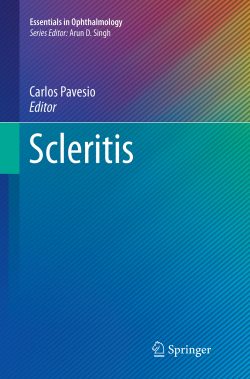A well-illustrated and comprehensive analysis of the treatment of diabetic retinopathy, this book covers current treatment options and guidelines, whilst also providing a detailed discussion of emerging therapeutic targets.
Existing therapeutic options are covered in depth, with a major focus on anti-vascular endothelial growth factor drugs and sustained release corticosteroids, including a review of trial results supporting current treatment guidelines. The use of agents off-label is also discussed. Controversial topics are discussed in detail with an emphasis on helping the reader make informed decisions, particularly when treating patients for which several treatment approaches may be appropriate because trial data does not clearly define the best option.
Emerging therapeutic areas are evaluated, as work continues to identify agents that produce superior morphologic responses and visual acuity gains by targeting other molecules that contribute to diabetic retinopathy. Promising new drugs, targets and delivery systems are identified, and their development analysed.
1. Diabetes and Diabetic Retinopathy: Overview Of A World-Wide Epidemic.- 2. The Diabetic Retina: Anatomy and Pathophysiology.- 3. Treatment of Diabetic Retinopathy: A Historical Perspective.- 4. Targeting Vascular Endothelial Growth Factor.- 5. Corticosteroids: Targeting Multiple Cytokines and Chemokines.- 6. Current Treatment Recommendations.- 7. Vitreolysis: Targeting the Vitreoretinal Interface.- 8. Investigational Medications.- 9. Safety Considerations of Pharmacotherapy.- 10. Socioeconomic Cost of Diabetic Retinopathy and Therapy.
Michael W. Stewart, MD is Professor of Ophthalmology in the Mayo School of Medicine and for the past 10 years has served as Chairman of the Department of Ophthalmology at Mayo Clinic Florida.
Dr. Stewart has published broadly on several vitreoretinal surgical conditions, infectious retinitis, and macular diseases. His primary research interests center on the pathophysiology and treatment of chorioretinal vascular conditions, and drug development. Dr. Stewart has published numerous manuscripts on ocular pharmacokinetics, pharmacodynamics, and the mathematical modeling of treatment responses.
Dr. Stewart has authored 86 peer reviewed manuscripts, serves on the Editorial Boards of 5 journals, including as Associate Editor of the American Journal of Ophthalmology, and has performed peer-review for 70 other journals. During each of the past 4 years he has been an organizing member and primary author of a multi-city symposium on the treatment of macular diseases. For the 2015 educational series – Retinal Forum: Focus on Diabetic Retinopathy – Dr. Stewart authored and presented the introductory lecture “Pharmacology of Retinal Therapeutic Agents”.
A well-illustrated and comprehensive analysis of the treatment of diabetic retinopathy, this book covers current treatment options and guidelines, whilst also providing a detailed discussion of emerging therapeutic targets.
Existing therapeutic options are covered in depth, with a major focus on anti-vascular endothelial growth factor drugs and sustained release corticosteroids, including a review of trial results supporting current treatment guidelines. The use of agents off-label is also discussed. Controversial topics are discussed in detail with an emphasis on helping the reader make informed decisions, particularly when treating patients for which several treatment approaches may be appropriate because trial data does not clearly define the best option.
Emerging therapeutic areas are evaluated, as work continues to identify agents that produce superior morphologic responses and visual acuity gains by targeting other molecules that contribute to diabetic retinopathy. Promising new drugs, targets and delivery systems are identified, and their development analysed.
A comprehensive introduction provides the reader an overview of the global diabetes epidemic and the relationship between diabetic retinopathy and systemic factors
A detailed discussion of the biochemical and ocular histopathological abnormalities in patients with diabetic retinopathy is provided





